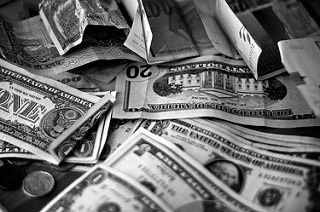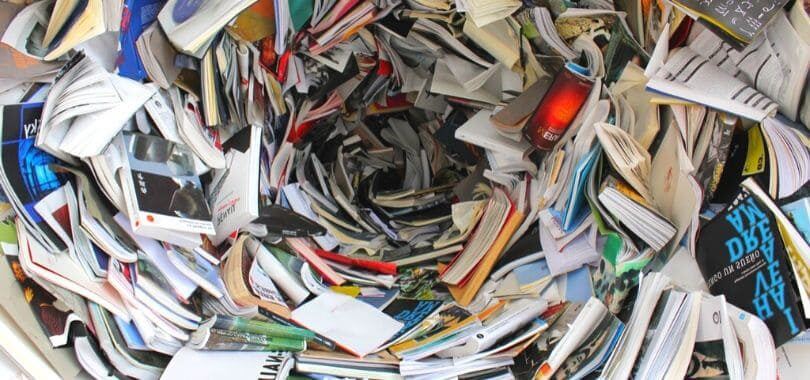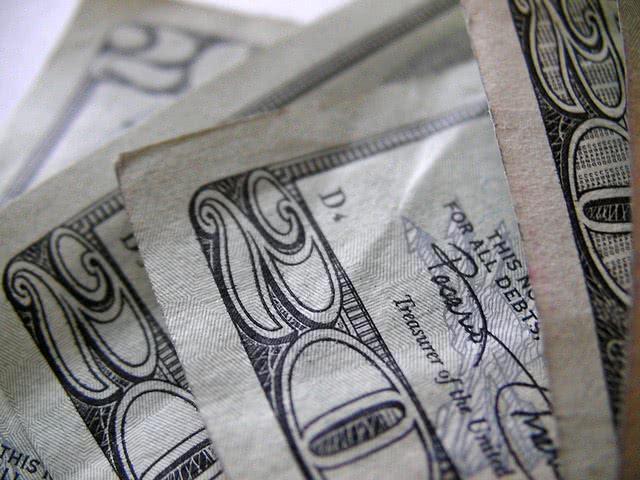
Flickr user MoneyBlogNewz
By now, you’ve probably heard of FAFSA, or the Free Application for Federal Student Aid, but do you know all the different forms of federal aid and how they can help you? Read on to see the different types you may qualify for:
Student Loans
The most well known result of FAFSA is loans. However, there are plenty of different loans you may qualify for. Direct subsidized loans will be offered to students who demonstrate financial need while direct unsubsidized loans are available to all students who complete the application.
Other loans available from the federal government include Direct Plus Loans, Direct Consolidation Loans, and the Federal Perkins Loan Program. Direct Plus Loans are only available to graduate students or parents of undergraduates. For the Federal Perkins Loan Program, the loan comes from your school. Direct Consolidation Loans are generally after you graduate and are a way to lump your federal loans into one to make it easier to pay.
If you are accepting a loan through the Department of Education, make sure to read the repayment information to ensure you’re not missing payments as each loan is different.
Grants
Just like loans, there are several grants you can get from federal aid, but unlike loans, they generally don’t have to be paid back. Federal Pell Grants and Federal Supplemental Educational Opportunity Grants (FSEOG) are awarded to students who have demonstrated financial need. However, it’s important to note that not all schools participate in the FSEOG.
If one of your parents was a member of the U.S. armed forces and died due to service in Iraq or Afghanistan after 2001, you may qualify for the Iraq and Afghanistan Service Grant. If you’re interested in teaching, you could also look into the TEACH grants. The teacher grants though start out as loans and become grants that do not need to be repaid if you work within a certain career for a set number of years.
It’s important to note that grants may have to be repaid if you leave school early, did not meet the requirements, or you have reduced financial need.

Work Study
Completing the FAFSA also makes you eligible for work study programs. These are part time jobs through your school or the community that can help you pay for college. Available to students with demonstrated financial need, you have to make sure your school participates in order to be eligible.
Sadly though, even if you are granted work study by the government, it doesn’t guarantee you a job. If you’re granted this federal aid, it’s important to get in touch with your college to apply for any positions they may have available as soon as possible.
Completing the FAFSA can make you eligible for much more than just loans. However, if you’re in need of financial assistance, loans could be exactly what you need. It’s essential to complete the FAFSA as soon as possible to ensure your best chances for grants and work study. Many colleges and universities also use the application to hand out their own grants and scholarships. Even if you don’t think you’d qualify for financial aid, apply, because you may be surprised.
| Lender | Rates (APR) | Eligibility | |
|---|---|---|---|
 |
5.19% - 15.81%* Variable
3.99%-15.61%* Fixed
|
Undergraduate and Graduate
|
VISIT CITIZENS |
 |
4.79% - 14.96% Variable
3.49% - 15.49% Fixed
|
Undergraduate and Graduate
|
VISIT SALLIE MAE |
 |
4.38% - 17.99% Variable
3.39% - 17.99% Fixed
|
Undergraduate and Graduate
|
VISIT CREDIBLE |
 |
5.34% - 13.19% Variable
3.48% - 12.61% Fixed
|
Undergraduate and Graduate
|
VISIT LENDKEY |
 |
5.25% - 14.26% Variable
3.39% - 14.16% Fixed
|
Undergraduate and Graduate
|
VISIT ASCENT |
 |
3.70% - 8.75% Fixed
|
Undergraduate and Graduate
|
VISIT ISL |
 |
4.99% - 16.85% Variable
3.47% - 16.49% Fixed
|
Undergraduate and Graduate
|
VISIT EARNEST |
 |
5.00% - 13.97% Variable
3.69% - 14.22% Fixed
|
Undergraduate and Graduate
|
VISIT ELFI |





